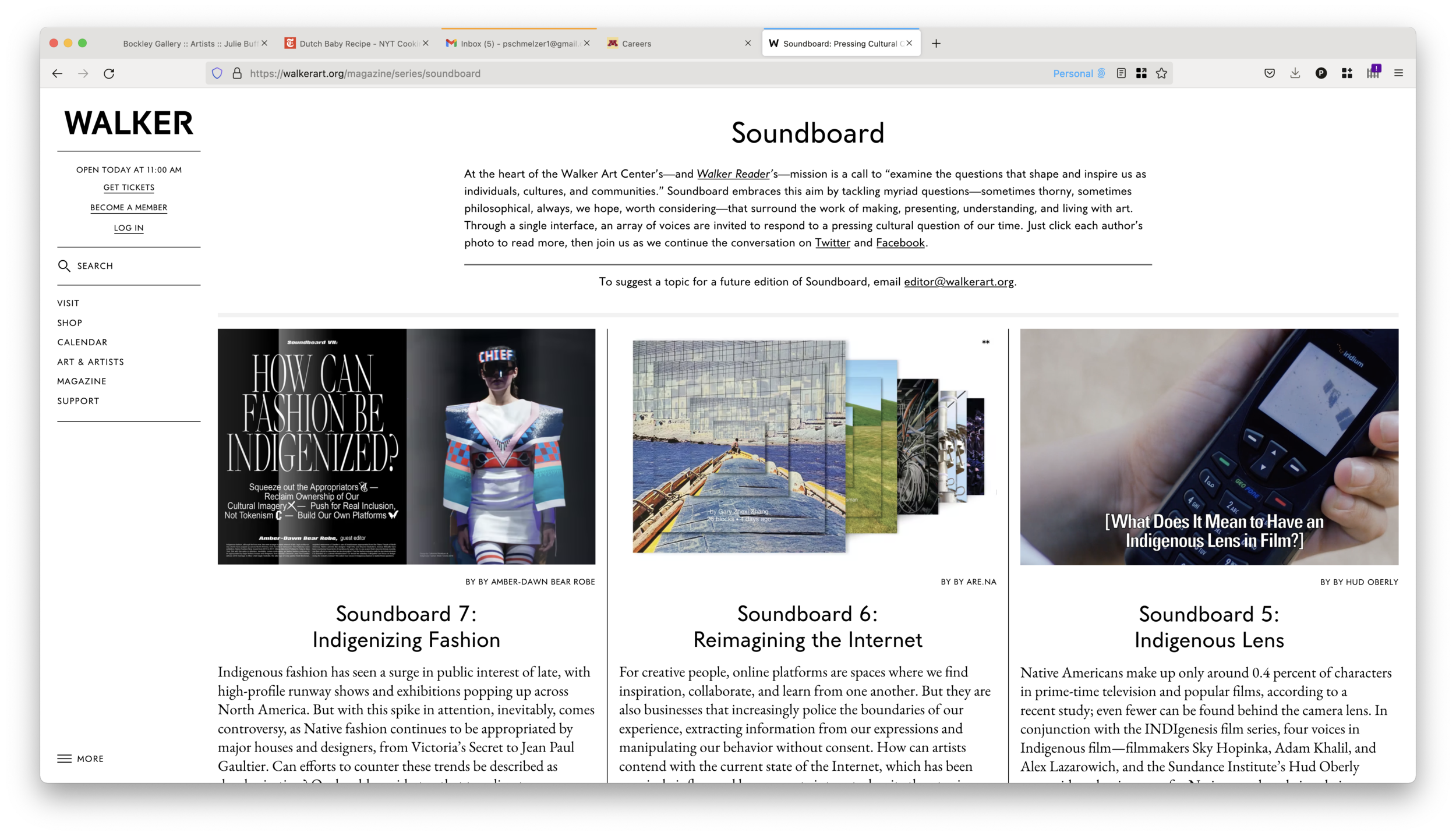Soundboard: Pressing Cultural Questions, Multiple Voices
At the heart of the Walker Art Center’s—and Walker Reader’s—mission is a call to “examine the questions that shape and inspire us as individuals, cultures, and communities.” As Reader editor from 2011 to 2020, I conceived of Soundboard as a way for the museum to embrace this aim, as a forum through which we could tackle myriad questions—sometimes thorny, sometimes philosophical, always, I hope, worth considering—that surround the work of making, presenting, understanding, and living with art. Through a single interface, an array of voices were invited to respond to a pressing cultural question of our time. Just click an author portrait to read a new text.
Launched in March 2018, the Reader published ten editions during my tenure, featuring 27 voices, each compensated for their contribution, from a diversity of backgrounds, geographies, and perspectives (artists, museum directors, critics, journalists, filmmakers, art programmers, etc.). In hopes of setting a tone of brave inquiry, the first edition tackled a topic of deep concern to the Walker: allegations of sexual harassment against Chuck Close, an artist the Walker had been very supportive of in the past (it was the first museum to purchase one of his paintings, organized two solo shows, and holds 18 works in its collection). Five figures—including YBCA CEO Deborah Cullinan and artist Rashayla Marie Brown—shared their perspectives on the question, "How Should Museums Deal with Art by Alleged Harassers?" Successive editions looked at: ways to create a queer design pedagogy (guest-edited by designer Nicole Killian); the roles of art and journalism in understanding policies around the US/Mexico border; recommended New Year's resolutions for museums in the age of #BlackLivesMatter, #MeToo, and #DecolonizeThis; and what it means to have an Indigenous lens in filmmaking (guest edited by Hud Oberly of the Sundance Institute’s Indigenous Program). The most recent (and final) edition, published in March 2019, asked filmmakers to weigh in the ways documentary practices can help pop political bubbles.
This multi-author tool helped the Walker live out its institutional commitment to diversity and inclusion (all writers were paid, and diversity was a chief lens when selecting contributors and topics), to robust inquiry and discussion, to a multidisciplinary approach to art, and to using Walker Reader as a way to ensure a meaningful experience for virtual visitors independent of their proximity to the Walker or ability to visit in person.








